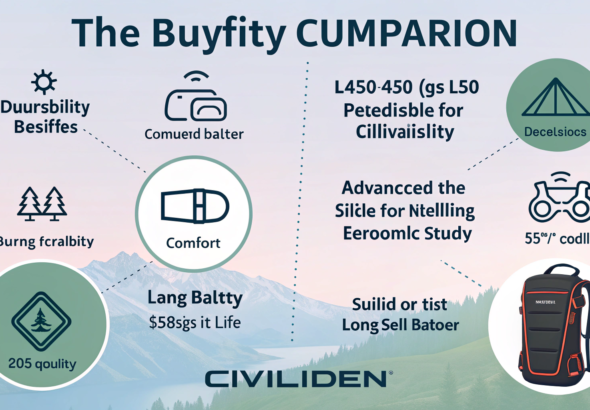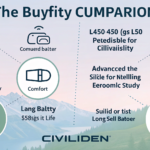- soutaipasu – Explore

- masgonzola – Meaning, Origins, Benefits

- FintechZoom.com Lifestyle – A Complete Guide

- Premium Refurbished Tech Deals at Zextons UK: Save More on Your Next Upgrade

- Why Should I Buy Civiliden LL5540 – A Complete Guide
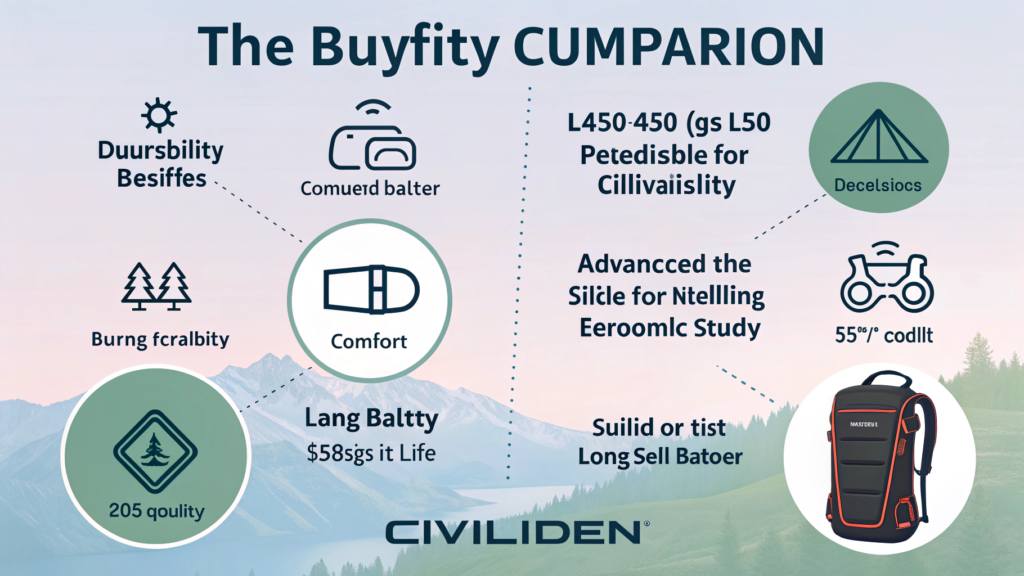
- How Fintech Is Transforming Traditional Business Models Across Industries

- excntech technology news by eyexcon – A Complete Guide

- What To Expect During Your First Visit to a Foot Doctor

- how hcs 411gits software built – Full Guide, Features

- house renovation heartomenal – Guide

- why im building capabilisense medium – A Simple Guide to Skills

- convwbfamily – A Comprehensive Guide

- Fixed vs. Variable Equipment Loan Rates: Which Is Right for Your Business?
- bigcokc69420 – Full Guide, Features, Uses & FAQs

- what to eat after wisdom teeth removal – Comprehensive Guide

- Auto-Vox Backup Camera for Trucks – Clear Vision in Any Weather

- The Importance of Address Autocomplete for Enhancing User Experience

- how to check transmission fluid – Signs And Tips

- grossoptionsed.com – A Simple Guide to Understanding This Smart Digital System

- 10 Best Face Swap Tools of 2025

- evan george kruntchev – His Journey And Achievements

- yvette amos – Guide

- brett desmond – A Closer Look at His Life, Career, and Influence

- tenerife airport emergency meeting – Guide

- amelie mccan – A Story of Strength, Hope

- chromiumfx – Modern Web Development

- grospal – Making Business Growth Smarter

- holisticke – Embracing the Power of Wholeness

- rowdy oxford integris – A Modern Vision of Innovation

- stephen spoonamore – The Tech Expert Who Fought for Digital Integrity

GeometrySpot: A Modern Way to Learn Geometry
Geometryspot unblocked games have gained significant popularity among students and casual gamers alike, especially in environments where access to gaming websites is restricted, such as schools or workplaces.
These games are designed to bypass network restrictions, allowing users to play without interruptions or blocks typically imposed by network administrators. The appeal of Geometryspot unblocked games lies in their simple yet engaging gameplay that challenges the player’s spatial awareness, problem-solving skills, and quick reflexes.
In an age where digital entertainment is a major part of daily life, these games provide a much-needed break from routine tasks while still offering cognitive benefits. The term “unblocked” refers to the fact that these games can be accessed through specific platforms or proxies that circumvent restrictions, making them widely available even on limited networks.
Geometryspot, in particular, focuses on geometric puzzles, shape manipulation, and spatial challenges, making it not only entertaining but also educational. It helps improve players’ understanding of shapes, angles, and geometric properties in a fun and interactive way.
Whether you’re a student looking for a fun distraction or someone who enjoys casual brain teasers, Geometryspot unblocked games offer a great option. This article will explore the various aspects of Geometryspot unblocked games, including how to access them, types of games available, benefits, challenges, tips, and future trends.
By the end of this guide, you’ll have a thorough understanding of why these games have become a go-to choice for many and how to make the most out of them safely and enjoyably. kenmore age serial number vf33017929
What Are Geometryspot Unblocked Games?
Geometryspot unblocked games are online games that revolve around geometric shapes, spatial reasoning, and puzzle-solving, which can be accessed even on restricted networks such as school or office internet connections. Unlike regular online games, these unblocked versions are specifically designed or made available through platforms that bypass internet filters and firewalls commonly used in institutions to prevent access to gaming sites.
The “Geometryspot” part usually refers to a collection or a genre of games that emphasize geometric puzzles, involving tasks like fitting shapes together, calculating angles, navigating through mazes of polygons, or solving challenges based on symmetry and spatial patterns.
These games can be simple, requiring only basic mouse or keyboard controls, but they often challenge players to think critically and improve their understanding of geometry concepts. For students, they serve as an entertaining way to practice skills learned in class without feeling like work. For others, these games provide a quick mental workout and a break from more intense or competitive gaming options.
The unique feature of Geometryspot unblocked games is that they maintain accessibility regardless of network restrictions, making them popular in educational settings where internet access is controlled. This unrestricted access encourages more frequent gameplay and learning, blending education with fun seamlessly.
Furthermore, these games often do not require downloads or installations, as they are browser-based, which adds to their convenience and safety. Players can enjoy these games on different devices such as laptops, tablets, or even smartphones without worrying about software compatibility or space constraints.
In summary, Geometryspot unblocked games are a special category of educational and recreational games that focus on geometric challenges, easily accessible through unblocking methods, and offer users an enjoyable way to enhance spatial and problem-solving skills wherever internet restrictions apply.
- soutaipasu – Explore

- masgonzola – Meaning, Origins, Benefits

- FintechZoom.com Lifestyle – A Complete Guide

- Premium Refurbished Tech Deals at Zextons UK: Save More on Your Next Upgrade

- Why Should I Buy Civiliden LL5540 – A Complete Guide

- How Fintech Is Transforming Traditional Business Models Across Industries

How to Access Geometryspot Unblocked Games
Accessing Geometryspot unblocked games is straightforward and convenient, especially for users who face restrictions on gaming websites due to network filters at schools, offices, or other institutions. Here’s a detailed guide on how to access these games safely and effectively:
Using Unblocked Game Websites
Many websites specialize in hosting unblocked versions of popular games, including Geometryspot. These platforms bypass common network restrictions by hosting the games on alternative domains or by using proxy servers. Users can simply visit these sites and start playing without downloading anything or needing special permissions.
Tips for using unblocked game websites:
- Ensure the website is reputable to avoid malware or intrusive ads.
- Check if the site regularly updates its game library to have access to the latest Geometryspot levels.
- Bookmark your favorite unblocked game sites for quick future access.
Accessing Through School or Work VPNs
If your institution provides a VPN (Virtual Private Network), you may use it to access blocked websites safely. A VPN masks your IP address and routes your connection through a different server, allowing you to bypass content restrictions and access Geometryspot unblocked games.
Precautions when using VPNs:
- Use only trusted and institution-approved VPN services.
- Be aware of any policies regarding VPN use to avoid disciplinary action.
- Choose servers with low latency for smoother gameplay.
Using Browser Extensions or Proxy Services
Browser extensions or proxy services can help unblock gaming websites by routing your traffic through alternate servers. Some popular proxy extensions for Chrome, Firefox, or Edge are designed to unblock restricted content with just one click.
Important points:
- Always download extensions from official browser stores.
- Review user ratings and permissions before installation.
- Disable the extension when not in use to maintain privacy and security.
Mobile Access to Geometryspot Unblocked Games
Many unblocked game websites are mobile-friendly, allowing users to play Geometryspot games on smartphones and tablets. Access is usually via mobile browsers without requiring app installations.
To optimize mobile gameplay:
- Use a stable Wi-Fi connection to reduce lag.
- Play in landscape mode for better screen visibility.
- Clear browser cache regularly to improve performance.
Troubleshooting Access Issues
If you experience difficulties accessing Geometryspot unblocked games, try the following solutions:
- Clear your browser cookies and cache.
- Try different browsers (Chrome, Firefox, Edge).
- Restart your device to reset network settings.
- Check if the game website is down using status-checking tools.
- Contact your network administrator if you suspect firewall blocking.
Popular Geometryspot Games to Play Unblocked
Geometryspot offers a variety of engaging and educational games that focus on shapes, logic, and spatial reasoning. These games are popular among students and casual players alike, especially when accessed as unblocked games in school or work settings. Below are some of the most popular Geometryspot games that you can enjoy without restrictions:
- Understanding Julie Copp Oregon NPI: A Comprehensive Guide

- anthony coleff glendale california: Education Success Story

- Arados Natalie Drenske: Revolutionizing the Information Ecosystem in the Digital Age

Geometry Dash Unblocked
Geometry Dash is an addictive rhythm-based platformer where players navigate a cube through challenging obstacle courses synced to music beats. The game tests reflexes, timing, and hand-eye coordination. The unblocked version ensures students can enjoy this fun and challenging game without firewall restrictions.
- Features vibrant geometric graphics and catchy soundtracks.
- Offers multiple levels with increasing difficulty.
- Supports custom level creation and sharing.
Geometry Puzzle Challenge
This game involves solving puzzles based on geometric shapes and properties. Players must use logic and spatial reasoning to complete tasks like matching shapes, calculating angles, or completing patterns.
- Enhances problem-solving and critical thinking skills.
- Suitable for all ages, especially useful as an educational tool.
- Includes timed challenges for added excitement.
Shape Escape
In Shape Escape, players control a geometric shape that must navigate through a maze filled with traps and obstacles. The goal is to reach the exit in the shortest time possible while avoiding hazards.
- Encourages quick thinking and strategic planning.
- Features simple controls, making it accessible to all players.
- Increasing complexity keeps players engaged.
Geometry Shooter
A unique twist combining geometry and shooting mechanics, Geometry Shooter requires players to destroy shapes before they reach the bottom of the screen. Accuracy and speed are essential to succeed.
- Fun way to improve reaction times.
- Includes power-ups and bonus levels.
- Simple yet challenging gameplay.
Tangram Master
Based on the classic tangram puzzle, this game asks players to assemble geometric pieces into a specific shape without overlaps. It’s a relaxing yet stimulating game that tests spatial awareness.
- Improves visual-spatial skills.
- Offers a wide range of puzzles from easy to expert level.
- Suitable for both kids and adults.
Summary Table of Popular Geometryspot Unblocked Games
| Game Name | Genre | Key Skills Developed | Recommended For |
|---|---|---|---|
| Geometry Dash | Platformer | Timing, Reflexes | Casual Gamers, Teens |
| Geometry Puzzle Challenge | Puzzle | Logic, Spatial Reasoning | Students, Educators |
| Shape Escape | Maze/Adventure | Strategy, Quick Thinking | All Ages |
| Geometry Shooter | Action | Accuracy, Reaction Time | Players Seeking Challenge |
| Tangram Master | Puzzle | Visual-Spatial Skills | Puzzle Lovers, Educators |
These games highlight the variety and educational value available within the Geometryspot unblocked games collection. They provide entertainment while enhancing cognitive abilities, making them perfect for both leisure and learning.
Benefits of Playing Geometryspot Unblocked Games
Playing Geometryspot unblocked games offers a wide range of benefits, especially for students and individuals looking to enhance their cognitive skills while having fun. These games combine entertainment with educational value, making them an excellent tool for learning and development. Below are the key benefits of engaging with Geometryspot unblocked games:
Enhances Spatial Awareness
Many Geometryspot games focus on shapes, sizes, and spatial relationships. Playing these games regularly helps players develop a stronger understanding of spatial awareness, which is critical in fields like architecture, engineering, and art.
- Players learn to visualize how different shapes fit together.
- Improves the ability to judge distances and angles.
- Helps in understanding real-world spatial concepts better.
Improves Problem-Solving Skills
Geometryspot games often require solving puzzles or navigating through complex levels, encouraging players to think critically and find creative solutions.
- Enhances logical reasoning and strategic thinking.
- Teaches patience and persistence when faced with challenging tasks.
- Develops the ability to analyze problems from multiple angles.
Boosts Concentration and Focus
To succeed in many of these games, players must maintain attention and focus on detailed tasks. This repeated practice can improve concentration levels, especially useful for students.
- Trains the brain to maintain focus over extended periods.
- Helps reduce distractions by engaging players in absorbing activities.
- Supports better performance in academic and professional settings.
Provides Stress Relief and Entertainment
Games from Geometryspot are designed to be fun and engaging, offering a perfect way to unwind and relieve stress after a busy day.
- Offers a healthy break from studies or work.
- Engages players in light-hearted fun without negative impacts.
- Acts as a motivational reward after completing tasks or lessons.
Accessible Anytime and Anywhere
Because Geometryspot games are available as unblocked versions, players can access them easily at school, work, or home without worrying about firewalls or restrictions.
- Convenient access promotes consistent gameplay.
- Encourages casual learning on the go.
- Suitable for all ages and skill levels.
Summary Table of Benefits
| Benefit | Description | Impact |
|---|---|---|
| Enhances Spatial Awareness | Improves understanding of shapes and spatial relations | Better visualization and design skills |
| Improves Problem-Solving | Develops logical and creative thinking | Stronger analytical abilities |
| Boosts Concentration | Trains focus through engaging challenges | Increased attention span |
| Provides Stress Relief | Offers entertaining breaks from routine | Reduced stress and better mood |
| Accessible Anytime | Unblocked access ensures availability | More frequent and flexible play |
Incorporating Geometryspot unblocked games into your routine is not just entertaining—it’s a smart way to boost mental skills while enjoying interactive gameplay.
- 001-gdl1ghbstssxzv3os4rfaa-3687053746 – A Detailed Overview of the Code

- 0194343120171 || Who Is Calling and What You Need to Know

- 10 Best Face Swap Tools of 2025

How to Access Geometryspot Unblocked Games Safely
Accessing Geometryspot unblocked games safely is important to ensure a secure and enjoyable gaming experience, especially when playing at school or work where restrictions may apply. Here are the key steps and tips to access these games without issues:
Use Trusted Websites
Always access Geometryspot unblocked games through reputable and well-known websites that specifically offer unblocked versions of popular games.
- Avoid suspicious or unknown sites that may contain malware.
- Look for sites with positive reviews and secure HTTPS connections.
- Examples include official educational platforms or trusted gaming portals.
Use VPN or Proxy Services (If Needed)
If your network blocks access to Geometryspot games, using a reliable VPN (Virtual Private Network) or proxy service can help bypass restrictions safely.
- VPNs encrypt your internet connection, adding privacy.
- Choose VPN services with good speed and security features.
- Be aware of any school or workplace policies regarding VPN use.
Avoid Downloading Unknown Files
Many unblocked games run directly in the browser without requiring downloads. Avoid downloading files or software unless you trust the source.
- Downloads from untrusted sources may contain viruses or spyware.
- Browser-based games reduce risk and are more convenient.
Keep Your Browser and Security Software Updated
Ensure your web browser and antivirus software are always up to date to protect against vulnerabilities.
- Updates often fix security flaws that hackers exploit.
- Use browsers like Chrome, Firefox, or Edge for better security.
Use Strong Passwords and Account Protection
If the website requires registration, use strong passwords and enable two-factor authentication if available.
- Protect your account from unauthorized access.
- Avoid reusing passwords from other accounts.
Be Mindful of Your Time
Even though Geometryspot unblocked games are fun and beneficial, it’s important to manage your time wisely.
- Avoid excessive gaming that can affect work or studies.
- Set time limits or take breaks to prevent eye strain.
Summary Table: Safe Access Tips
| Tip | Description | Why It Matters |
|---|---|---|
| Use Trusted Websites | Play games from reliable platforms | Avoid malware and scams |
| Use VPN or Proxy (If Needed) | Bypass network restrictions securely | Access games without blocks |
| Avoid Unknown Downloads | Don’t download files from suspicious sources | Prevent viruses and spyware |
| Update Browser & Security | Keep software current | Protect against cyber threats |
| Strong Passwords & Protection | Secure accounts with strong credentials | Prevent unauthorized access |
| Manage Gaming Time | Limit playtime for balanced daily routine | Maintain productivity and health |
By following these simple safety tips, you can enjoy Geometryspot unblocked games securely, whether at school, work, or home.
Popular Geometryspot Games to Try
Geometryspot offers a variety of unblocked games that combine fun gameplay with geometric concepts, perfect for enhancing spatial awareness and problem-solving skills. Here are some popular Geometryspot games you can try:
Geometry Dash
One of the most famous games on Geometryspot, Geometry Dash is a rhythm-based platformer where players control a square and navigate through various obstacles timed to music.
- Features fast-paced gameplay requiring quick reflexes.
- Levels increase in difficulty, testing precision and timing.
- Offers custom level creation for endless variety.
Shape Fold
Shape Fold challenges players to fold and manipulate geometric shapes to solve puzzles.
- Enhances understanding of spatial relationships.
- Encourages logical thinking and creativity.
- Suitable for all ages due to its simple yet engaging mechanics.
Block Puzzle
Block Puzzle is a classic puzzle game where players arrange geometric blocks to fill a grid without gaps.
- Helps improve pattern recognition.
- Requires planning and strategic thinking.
- Great for relaxing yet stimulating gameplay.
Tangram Challenge
Based on the traditional Chinese puzzle, Tangram Challenge involves arranging seven geometric pieces to form specific shapes.
- Boosts visual-spatial reasoning.
- Encourages patience and problem-solving.
- Available with increasing levels of complexity.
Polygon Escape
In Polygon Escape, players control a polygon navigating through a maze filled with traps and challenges.
- Focuses on quick decision-making.
- Combines geometry concepts with adventure elements.
- Suitable for players who enjoy action-packed puzzles.
Summary Table: Popular Geometryspot Games
| Game Name | Type | Skills Developed | Difficulty Level |
|---|---|---|---|
| Geometry Dash | Rhythm Platformer | Reflexes, Timing | Medium to Hard |
| Shape Fold | Puzzle | Spatial Awareness, Logic | Easy to Medium |
| Block Puzzle | Classic Puzzle | Pattern Recognition | Easy |
| Tangram Challenge | Traditional Puzzle | Visual-Spatial Reasoning | Medium |
| Polygon Escape | Adventure Puzzle | Quick Thinking, Strategy | Medium |
Trying these games can be both entertaining and educational, making Geometryspot unblocked games a great choice for gamers and learners alike.
Popular Geometryspot Unblocked Games to Try
Tech
- Premium Refurbished Tech Deals at Zextons UK: Save More on Your Next Upgrade

- Auto-Vox Backup Camera for Trucks – Clear Vision in Any Weather

- The Subtle Upgrade That Changes How You Feel About Your Apple Watch
- The Evolution of Marketing Harnessing Automated Direct Mail and Address Verification APIs

- onthisveryspot fibertel – What It Is, How It Works, and What to Know

- The Rise of Face Swap, Body Swap, and Head Swap Technology

- cñims – Benefits, Architecture, Use Cases

- xuebaotou – Why This Chinese Term Matters Today

- How To Make Your Emails HIPAA Secure

Geometryspot offers a variety of fun and engaging games that are popular among players of all ages. Here’s a list of some top games you can try when playing Geometryspot unblocked games:
Geometry Dash
One of the most famous games on Geometryspot, Geometry Dash challenges players to navigate a square through tricky geometric obstacles by timing jumps perfectly.
- Gameplay: Fast-paced platformer with rhythmic music.
- Difficulty: Increasing levels of challenge.
- Why Popular: Simple controls but requires skill and precision.
Cube Jump
In Cube Jump, you control a cube that must jump over spikes, gaps, and other hazards.
- Gameplay: Jumping and timing-based.
- Visual Style: Minimalist geometric shapes.
- Appeal: Great for quick, casual gaming sessions.
Polygon Puzzle
This is a puzzle game where players must fit various polygon shapes into a given space without overlapping.
- Gameplay: Logic and spatial reasoning.
- Difficulty: Ranges from easy to challenging puzzles.
- Educational Value: Improves problem-solving skills.
Blocky Racer
A racing game featuring blocky cars and geometric tracks.
- Gameplay: Fast-paced racing with power-ups.
- Visuals: Colorful and geometric design.
- Fun Factor: Competitive and adrenaline-filled.
10.5 Shape Shooter
In Shape Shooter, players shoot geometric shapes to clear the screen while avoiding obstacles.
- Gameplay: Action and reflex-based.
- Strategy: Timing shots and moving strategically.
- Why Play: Exciting and engaging for quick play.
Geometry Connect
A connecting puzzle where you link dots in geometric patterns without crossing lines.
- Gameplay: Brain teaser and pattern recognition.
- Difficulty: Levels get progressively harder.
- Benefit: Enhances concentration and planning.
Tips for Improving Your Skills in Geometryspot Unblocked Games
Playing Geometryspot unblocked games can be fun, but improving your skills can make the experience even more rewarding. Here are some practical tips to help you level up and enjoy the games to their fullest.
sss theorem geometry, geometry dash un, 3d geometry dash, geometry dash unblock, https://geometrydash.io unblocked, ed geometry, geometry tutorial, circles in geometry, geometry dash unblocked 76, geometry games online free, define circle in geometry, geometry dash google drive download, geometry subject pro, geometry lessons, chords geometry, geometry tips, geometry lesons, cc geometry, minecraft geometry dash, sss geometry definition, geometry lessons.net, geometry math game, geometry dash unblocked 66, geometry slope, geometry dash car, online geometry, doodle geometry, geometry dash minecraft, acute geometry, geometry circle, geometry dash school, geometrygame., juegos de geometry dash, google geometry, special right triangles geometry, color geometry, geometry.monster, unblocked geometry dash, geometry lesson pro, geometry dash game online free, geometry lite, aaa geometry, geometry dash google drive, unblocked games geometry dash, geo geometry dash, unblocked games 66 geometry dash, geometry dash wine, five nights at freddy’s geometry dash, geometry dash auto player, geometry spot games unblocked, geometry google, geometry dash rocket, geometry define, n-gen math geometry, not games google drive geometry dash,
Practice Regularly
The key to mastering any game is consistent practice. Spend time daily or weekly playing Geometryspot games to familiarize yourself with different challenges and game mechanics. The more you play, the better your reflexes and strategic thinking will become.
Learn Game Controls Thoroughly
Understanding the controls is fundamental. Spend some time learning how to maneuver your character or elements in the game efficiently. Most Geometryspot games have simple controls, but mastering timing and precision can significantly improve your gameplay.
Study Game Patterns and Levels
Many Geometryspot games have levels or patterns that repeat or increase in difficulty systematically. Pay attention to these patterns so you can anticipate challenges and plan your moves accordingly.
Watch Tutorials and Gameplay Videos
If you find certain levels difficult, watching tutorials or gameplay videos can provide insight into strategies used by other players. Platforms like YouTube have many walkthroughs and tips that can help you overcome tough spots.
Take Breaks to Avoid Fatigue
Playing for long periods can lead to fatigue, which may affect your concentration and performance. Taking short breaks during gaming sessions helps keep your mind fresh and focused.
Challenge Yourself with Higher Difficulties
Once comfortable with basic levels, try games with higher difficulty settings to push your skills further. This helps you adapt to more complex challenges and improves problem-solving abilities.
Join Online Communities
Engaging with other players in forums or social media groups dedicated to Geometryspot games can provide tips, tricks, and moral support. Sharing experiences helps you learn new techniques and stay motivated.
Popular Variations of Geometryspot Unblocked Games
Geometryspot unblocked games come in many variations, each offering unique gameplay, challenges, and fun twists. Exploring these different versions can keep your gaming experience fresh and exciting. Below are some of the popular variations:
health
- masgonzola – Meaning, Origins, Benefits

- What To Expect During Your First Visit to a Foot Doctor

- yvette amos – Guide

- brett desmond – A Closer Look at His Life, Career, and Influence

- amelie mccan – A Story of Strength, Hope

- holisticke – Embracing the Power of Wholeness

- Fonendi – A Modern Innovation in Health Technology

- Spray Tanning & Skin Health: How Florida Salons Are Emphasizing Skincare With Bronzing?

- homemade pumpkin & oatmeal dog snack sticks mydogrecipe.com – A Healthy Treat

- www talktogiantfood com survey – Step-by-Step Guide 2025

- The Importance of Precision in Pill Counting: How Pill Counter Machines Enhance Accuracy

- What Precautions Should Be Taken Before Teeth X-Ray
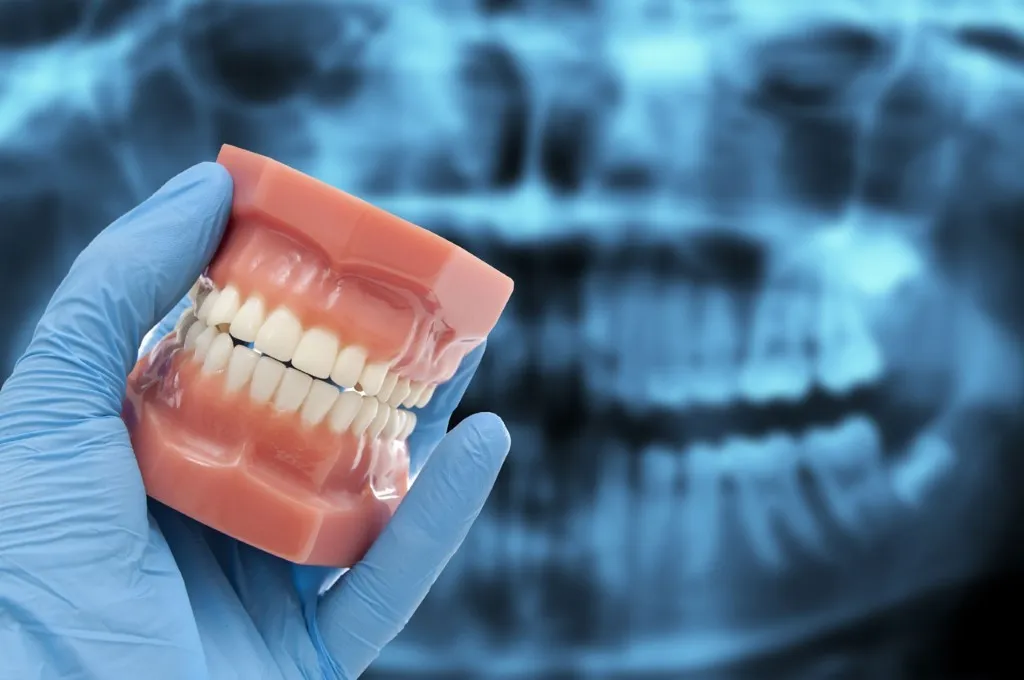
Geometry Dash
Geometry Dash is one of the most popular versions, known for its fast-paced platforming and rhythmic gameplay. Players control a square and navigate through obstacle-filled levels synchronized with music. It challenges timing, reflexes, and precision.
Geometry Dash Meltdown
A spinoff of Geometry Dash, Meltdown offers new levels, music tracks, and a slightly different storyline. It features unique backgrounds and themes, giving players a fresh experience while retaining the core mechanics.
Geometry Dash World
This version introduces more levels and a world map feature, allowing players to progress through different stages and unlock rewards. It’s designed to be more accessible with a slightly easier difficulty curve.
Geometry Dash SubZero
SubZero offers three new levels with unique soundtracks and visuals. It provides a quick, fun experience for both new and returning players, focusing on tight platforming and catchy music.
Custom Geometryspot Levels
Many players create and share their own custom levels online. These levels can vary widely in difficulty and style, providing endless variety and creativity in gameplay.
Multiplayer Geometryspot Games
Some versions or fan-made adaptations allow multiplayer modes where players compete or cooperate in challenges. This variation adds a social and competitive element to the game.
Geometryspot Puzzle Games
Apart from platformers, some Geometryspot unblocked games focus on puzzles involving geometric shapes, patterns, and logic challenges, appealing to players who enjoy brain teasers.
Popular Geometryspot Unblocked Games You Should Try
Geometryspot offers a variety of unblocked games that are popular among players for their engaging gameplay, easy controls, and fun themes. Here’s a list of some of the most loved Geometryspot unblocked games you can enjoy:
Business
- soutaipasu – Explore

- FintechZoom.com Lifestyle – A Complete Guide

- How Fintech Is Transforming Traditional Business Models Across Industries

- how hcs 411gits software built – Full Guide, Features

- house renovation heartomenal – Guide

- why im building capabilisense medium – A Simple Guide to Skills

Geometry Dash
One of the most famous games on Geometryspot, Geometry Dash is a rhythm-based platformer where players navigate a square icon through various obstacle courses. Its fast pace and catchy music make it addictive and fun.
Fireboy and Watergirl
This cooperative puzzle-platformer features two characters, Fireboy and Watergirl, who must work together to solve puzzles and complete levels. It’s great for playing with a friend or challenging your problem-solving skills solo.
Run 3
Run 3 is an endless runner game set in outer space tunnels. Players control a small alien running through tunnels suspended in space, requiring quick reflexes to avoid falling.
Happy Wheels
Known for its unique ragdoll physics and humorous violence, Happy Wheels offers a variety of characters and vehicles. Players navigate tricky obstacle courses, often with unexpected and funny results.
Snail Bob
Snail Bob is a charming puzzle game where you help Snail Bob navigate through levels filled with traps and challenges. It’s simple yet cleverly designed to make you think.
Papa’s Pizzeria
A time management and cooking game where players prepare and serve pizzas to customers. It combines strategy and speed to keep customers happy and the business running.
Slope
Slope is a fast-paced 3D game where players control a ball rolling down a slope, avoiding obstacles while trying to survive as long as possible.
Comparison Between Geometryspot and Other Unblocked Game Sites
When it comes to unblocked game sites, Geometryspot stands out, but it’s essential to compare it with other popular platforms to understand its strengths and weaknesses better. Below is a detailed comparison focusing on key aspects such as game variety, accessibility, safety, user interface, and learning benefits.
grid geometry, geometry math games, sp geometry llc, geometry-lessons, geometry lessons monster, geometry dash lite google sites, geometry craft dash juego, geometry dash 3d, geometry dash for chrome, geometry dash fake, geometrydash unblocked, geometry dash chromebook, geometry.lessons, geometry dash not blocked by school, geometry dash roblox, geometry dash online unblocked, unblock geometry dash, geometry unblocked, geometry dash unbloked, geometry dash play unblocked, geometry online, geometry aaa, geometry lessons.com, trigonometry in geometry, geometry io, geometry lessons game online, geometry dash unblocked games 66, game geometry, geometry pythagorean theorem, snow geometry, geometrygame, pythagorean theorem geometry, is pythagorean theorem geometry, geometry act, what is sss in geometry, geometrydash.com, circle in geometry definition, geometry contest games, geometry lessons unblocked games, geometry space, geometry math lessons, geometry dash cam, circle geometry theorems, sss in geometry, geometry circle definition, aas in geometry, math games geometry dash, circle in geometry, geometry dash offline,
Comparison Table: Geometryspot vs. Other Unblocked Game Sites
| Feature | Geometryspot | Other Unblocked Game Sites | Notes |
|---|---|---|---|
| Game Variety | Focused mainly on educational & puzzle games, especially geometry-based | Wide range including action, strategy, puzzles, and arcade games | Geometryspot emphasizes educational content |
| Accessibility | Available on most school networks with easy unblocked access | Some sites may be blocked on certain networks | Geometryspot is optimized for school environments |
| User Interface (UI) | Simple, clean, and user-friendly with minimal distractions | Varies widely; some have cluttered ads and pop-ups | Geometryspot provides a smoother user experience |
| Safety & Security | Minimal ads, secure platform, and safer for children | Some sites have intrusive ads or risky links | Geometryspot is more kid-friendly and safer |
| Educational Value | High – Games encourage learning, critical thinking, and spatial skills | Varies; many focus purely on entertainment | Geometryspot blends fun and education effectively |
| Device Compatibility | Works well on desktops and tablets | Most sites support multiple devices, but performance varies | Geometryspot is optimized for both PCs and tablets |
| Social Features | Limited social or multiplayer features | Some sites offer multiplayer modes and leaderboards | Other sites may encourage social interaction |
| Updates & New Games | Regular updates with new geometry-focused games | Updates vary depending on the site | Geometryspot focuses on quality over quantity |
| Ads & Monetization | Minimal and non-intrusive ads | Many sites rely heavily on ads, affecting gameplay | Geometryspot ensures fewer distractions |
| Support & Community | Basic support with a small but focused community | Larger communities but less personalized support | Geometryspot offers a focused user base |
Analysis:
- Geometryspot is ideal for students and players who want a blend of educational content with engaging gameplay, especially in the realm of geometry and puzzles. Its minimal ads, clean UI, and safe environment make it perfect for school use.
- Other Unblocked Game Sites typically offer a broader variety of games but may suffer from excessive advertising, lack of safety, and varying quality. They are more entertainment-focused but may not offer the same educational benefits.
- Social and Multiplayer Features tend to be better on some other sites, making them suitable for players looking to compete or play with friends online.
- Device Compatibility and Accessibility remain strong suits for Geometryspot, ensuring players can enjoy games even on restricted school networks.
In summary, Geometryspot excels in providing an educational, safe, and accessible platform focused on geometry-based puzzles, while other unblocked game sites cater more to diverse entertainment needs but with possible drawbacks in safety and user experience.
Are Geometryspot Unblocked Games Suitable for All Ages?
Geometryspot unblocked games are designed with simplicity and engagement in mind, which makes them suitable for a wide range of age groups. The games often involve basic geometric shapes and puzzles that can be enjoyed by younger children, helping them develop spatial awareness and problem-solving skills early on. Many schools use these types of games as supplementary tools to reinforce concepts taught in math classes.
For teenagers and adults, the complexity of some games increases to challenge logic, speed, and precision, offering a fun mental workout. The adaptive difficulty levels found in many Geometryspot games ensure that players of various skill levels find the games enjoyable and not too overwhelming.
geometry lessons lol, shell shockers geometry.monster, geometry.com games, geometry lesson list, geometry websites, geometry games, geometry.monster shell shockers, geometry sites, geometry spot puzzle games, geometry dash spot, geometry spot.us, geometry spot.net, geometry l o l, shift geometry dash, geometry lessons site, geometry spot.school, geometry-lessons.site, geometryspot.cc, geometry drive, online geometry games, acute geometry definition, geometry dash auto clicker, geometry spot cc, net definition in geometry, sss geometry, geometry-lesson.net games, trigonometry geometry, geometry-lesson.world, geometry dash school unblocked, pool geometry, geometry tree, abc of geometry, acute triangle definition geometry, play geometry, geometry dash code .org, geometrydashunblocked, geometry tutorials, sp geometry, play geometry dash unblocked, geometry sss, geometry co, geometry dash in minecraft, geometry lessons net, geometry sss sas asa aas, geometry dash chrome, what is aas in geometry, geometry theorems, geometry dash unblocked at school free, geometrygames, geometrydash-3d, definition of circle in geometry,
However, parents and educators should still supervise younger children to ensure age-appropriate game selection and balanced screen time. Overall, Geometryspot unblocked games provide educational value and entertainment, making them suitable for all ages with proper guidance.
Education
- how to check transmission fluid – Signs And Tips

- evan george kruntchev – His Journey And Achievements

- brett desmond – A Closer Look at His Life, Career, and Influence

- mobilecrc com – Explore

- lidarmos – 3D Mapping and Sensor Technology

- blake anderson hanley – Life, Career, and Legacy

Potential Risks and How to Avoid Them
While Geometryspot unblocked games offer many benefits, players should be aware of potential risks associated with online gaming. One common risk is distraction, where excessive gaming may interfere with study or work responsibilities. It’s important to maintain a healthy balance between gaming and other activities.
Another risk involves accessing unverified websites to play unblocked games, which may expose users to malware or inappropriate content. To avoid this, players should only use trusted websites known for hosting Geometryspot games safely.
Additionally, prolonged screen time can cause eye strain or fatigue. Players should take regular breaks and follow good ergonomic practices to reduce these effects.
By being mindful of these risks and following safety tips, players can enjoy Geometryspot unblocked games in a secure and healthy way.
User Reviews and Experiences with Geometryspot Unblocked Games
Players from various backgrounds have shared positive feedback about Geometryspot unblocked games, praising their engaging gameplay and educational value. Many users appreciate how these games combine fun with learning, especially for students looking to improve their math and geometry skills outside the classroom.
Parents often mention that these games help their children develop critical thinking and problem-solving abilities in an interactive way. Some users also highlight the convenience of being able to access these games on school or work networks where gaming sites are usually blocked, making Geometryspot a popular choice.
On the other hand, a few users report occasional technical issues like slow loading times or ads, but these concerns are generally minor compared to the overall benefits.
Overall, user experiences suggest that Geometryspot unblocked games provide a balanced mix of entertainment and education, making them a favored option among different age groups.
Future Trends in Geometryspot and Unblocked Gaming
The future of Geometryspot and unblocked gaming looks promising with several exciting trends on the horizon. As technology advances, these games are expected to become more immersive and interactive, integrating augmented reality (AR) and virtual reality (VR) elements to enhance user experience.
Developers are also focusing on making these games more accessible across different devices, including smartphones and tablets, ensuring players can enjoy them anytime and anywhere. Additionally, there is a growing emphasis on personalized learning experiences within games, tailoring challenges to match each player’s skill level for more effective education.
Another important trend is the incorporation of social features, such as multiplayer modes and leaderboards, which encourage community building and friendly competition among players.
Moreover, with increasing awareness about digital safety, future unblocked game platforms like Geometryspot are likely to implement stronger security measures and ad-free environments to create a safer and more enjoyable gaming space.
These advancements will not only improve the quality of gameplay but also expand the appeal of Geometryspot unblocked games to a broader audience.
geometryspot, geometry spot games, geometry spot activities, geometry spot roblox, geometry spot.ooo, geometryspot.com, geometryspot.oo, geometry spot unblocked, geometryspot com, geometry spot.com, geometry spot//, roblox geometry spot, geometry spot all, geometry sport, retro bowl geometry spot, activities geometry spot, geometry spot minecraft, geometry spot game, geometry spot ooo, monkey mart geometry spot, geometry spot home, geometry sopt, geometry roblox, geometry spot retro bowl, geometry spit, geometry spor, geometry spot com, geometry.spot games, geometry spot slope, geometry spot 1v1, geometryspot.com games, geometry spot monkey mart, geometry spot.oo, geometry spot 1v1 lol, geometry spot bitlife, all geometry spot, 1v1 lol geometry spot, geometryspot .com, geometry spt, geometry.spot, slope geometry spot, geometryspot ooo, geometry spot games unblocked, geometryspotcom, geometry spo, geometryspot.con, geometryspot.ooo, geometry sports, geometry spot activities, geometry games unblocked, geometry spots, geometry activities, geometry spot puzzle games, geometry stop, geometry.com, geometryspot.com/roblox/, geometry spot.000, geometry sport, geometry spot puzzle, geometryspot.com/roblox/,
Frequently Asked Questions (FAQs)
1. What are Geometryspot Unblocked Games?
Geometryspot unblocked games are online games focused on geometric concepts that can be accessed from locations where gaming sites are typically blocked, such as schools or workplaces. They combine learning with fun, helping players practice geometry skills without restrictions.
2. Are Geometryspot Unblocked Games safe to play?
Yes, most Geometryspot unblocked games are designed to be safe and educational. However, it’s important to access them from trusted websites to avoid malware or inappropriate content. Always ensure your device has updated security software.
3. Can Geometryspot Unblocked Games improve my math skills?
Absolutely. These games focus on geometry-related challenges that enhance spatial reasoning, problem-solving, and understanding of shapes, angles, and measurements, which are fundamental math skills.
4. Do I need to download anything to play Geometryspot Unblocked Games?
Typically, no. Most of these games run directly in your web browser without requiring downloads, making them convenient and accessible from any device with internet access.
5. Are Geometryspot Unblocked Games suitable for all ages?
While many Geometryspot games are designed for students, the difficulty levels vary. Some games cater to younger players, while others are more challenging and suitable for older students or adults wanting to sharpen their skills.
Conclusion: Why Geometryspot Unblocked Games Continue to Thrive
Geometryspot unblocked games continue to thrive because they offer a perfect blend of education and entertainment that appeals to a wide audience. These games make learning geometry engaging and accessible, especially for students who need extra practice outside of the classroom. The unblocked nature of these games allows users to bypass restrictions commonly found in schools or workplaces, giving them the freedom to play and learn anytime, anywhere.
geometry dash unblocked at school, geometry smash, interactive geometry, s geometry, geometry run, roblox geometry dash, geometry.lesson, geometry dash slope, geometry lessons.top, pythagorean theorem definition geometry, geometry-, obtuse geometry definition, geometry dash unblocked.io, escape road geometry dash, geometrygame.org, geometry dash for school, juegos geometry dash, geometry dash free unblocked, geometry game online, dino game geometry dash, geometry dash free unblocked games, geometry dash 2.0, geometry dash juego, what are chords in geometry, auto clicker for geometry dash, co geometry, geometry dash unblocked free, what geometry, hgeometry, geometry lessons top list, geometry dash on chromebook, math games in geometry, geometry lessons.us, fire in the hole geometry dash, geometry lesson.world, geometry dahs unblocked, sonic geometry, define theorem in geometry, fnf geometry dash, geometry dash super world, geometry dash at school, geometry at home, act geometry, geometry dash clicker
The diversity of games available on Geometryspot ensures there is something for every skill level, from beginners to advanced learners. Their focus on improving spatial awareness, problem-solving abilities, and mathematical thinking makes them valuable educational tools. Additionally, the community around Geometryspot keeps growing, with positive user reviews and continuous development of new games and features.
As technology evolves, Geometryspot adapts by integrating new gaming trends, making these unblocked games not only relevant but also exciting for future generations. This adaptability, combined with their educational benefits, ensures Geometryspot unblocked games will remain popular and continue to help players improve their geometry skills in an enjoyable way.
Digital Marketing
- ywmlfz 48w cordless – Power, Precision

- How Much To Invest In Real Estate To Get A Golden Visa? – Find Out If You Qualify!

- initial setup of jumper ezbook 95 max 16 laptop – Complete Guide
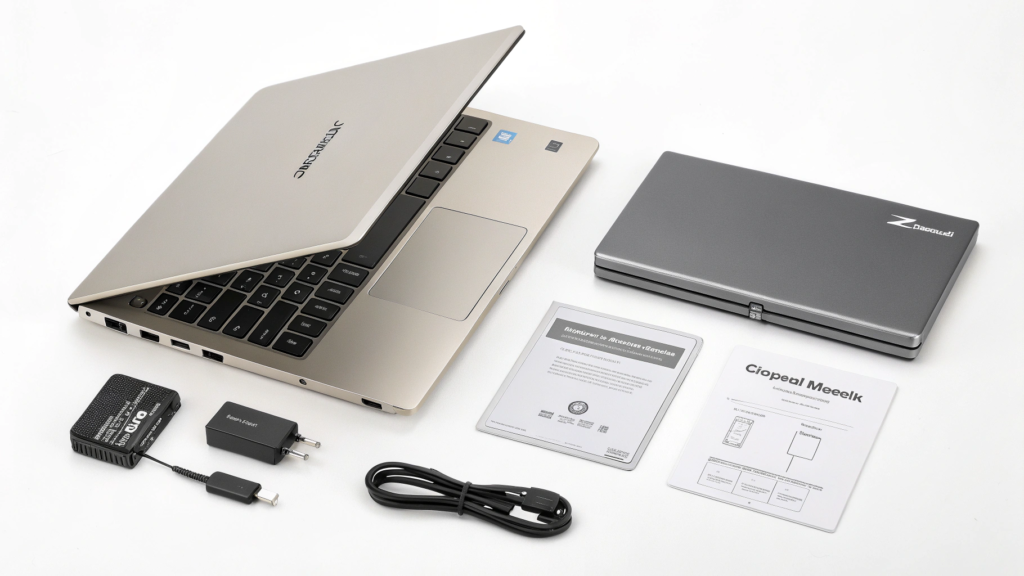
- swollen batteryhp laptop 14-dq1xxx – complete guide

- cflop-y44551/300 – A Complete Guide
- How National SEO Can Elevate Your Brand Across the Country

ftp://192.168.2.63:2121
http://192.168.12.208:8080
exp://192.168.1.153:8081
192.1368.130.73
192.168.131:8123
192.168.0.1353
192.168.10.155::7100
192.168.189:6601
192.168.99.212:2333
freerdp /u:student /p:lab /v:192.168.50.152
https://192.168.100.250.8006
https://192.168.100.250.8006/
//192.168.68.256/
- 168.1.6.2333, 192.1568.1.161, 192.168..5.17:5678, 192.168.064:6756, 192.168.1.73 / my cloud-ltvp 4s, 192.168.1.73 / mycloud-ltvp 4s, 192.168.3.18:8096/web/, 192.168.47.6.233, 192.168.68.256, 192.168.85.128.9100, 192.1688.131, http://192.168.68.256, https://192.168.1.241.8006, 192.468.5.1, 192.1688.200, exp://192.168.1.104:8081, http://192.168.51.1, 192.168.1.583, 192.168.1.9443, dav://192.168.8.1:6008/disk1_part1, exp://192.168.1.34:8081, 192.99.150.59.nip.io, https//192.168.0.80:8443 810-283-4503, 847-4283200, 818-475-2986, 9787679880, 908-540-7356, 985-296-9458, 252-220-8928, 877-480-6299, 6098534351, 8504294109, 641-715-5990, 971-439-4974, 6265404938, 314-403-8562, 6198123484, 562-449-2150, 8447151297, 737-271-2891, 786-464-4277, 573-246-7649, 680-287-9303, 202-899-9741, 216-499-2638, 8702632547, 908-367-4077, 6203378107, 7622632252, 737-259-0343, 773-337-3978, 8883797478, 6892738913, 253-393-9904, 7604959886, 209-493-4846, 725-241-6963, 630-394-9407, 224-218-6648, 810-283-4504, 617-409-0504, 3368401259, 572-210-8493, 314-228-2320, 866-534-3023, 9562014822, 865-505-2671, 2189933340, 239-467-5084, 605-513-2869, 8779961316, 501-480-0135, 2394026018, 725-228-6014, 775-249-6923, 888-510-4843, 775-254-4685, 3177951973, 469-829-1643, 323-517-2056, 469-972-8700, 8662341779, 215-261-5129, 512-886-7558, 9493846479, 2272533050, 650-231-6701, 980-249-4654, 2029708937, 330-223-5455, 888-854-6238, 210-879-4564, 6417155990, 615-919-5446, 323-746-1295, 762-257-1654, 3475727003, 909-729-4145, 520-487-8035, 432-237-4916, 9713230428, 669-316-0817, 561-710-6144, 2149104680, 818-418-2953, 818-252-8604, 913-521-3411, 803-820-4148, 757-936-6264, 9547376333, 855-597-3314, 425-896-9077, 771-209-7761, 313-449-8245, 6265652780, 347-238-2873, 918-297-0765, 6504251792, 6504251792, 806-607-0161, 4023789052, 929-509-4766, 208-540-3156, 848-285-5820, 626-654-1084, 7088597680, 224-588-5429, 7712132742, 1-866-333-6037, 219-227-0362, 9105938765, 617-604-3175, 812-807-2676, 8884234144, 562-314-1643, 510-585-9401, 480-977-6490, 3137232409, 2242623620, 844-719-5464, 844-719-5464, 215-986-2219, 929-659-7841, 9209441091, 203-547-8100, 908-649-3008, 206-424-8386, 941-297-0250, 779-280-2772, 614-957-1497, 603-244-3196, 915-250-0214, 860-453-0507, 8775134752, 727-633-0048, 980-366-6282, 8184533861, 2232032457, 5853042852, 2176991793, 973-330-8438, 3237461295, 3322651254, 551-373-7792, 801-477-6947, 1-470-849-6269, 8883798368, 2029925744, 2029925744, 7032451977, 214-612-5983, 307-355-8345, 855-748-2136, 9568098031, 412-827-1680, 3363322089, 718-310-3986, 469-206-9621, 9122024653, 301-329-6402, 551-550-0986, 561-320-0640, 509-289-5545, 737-910-2032, 615-510-6516, 959-335-9569, 747-225-8969, 619-853-6910, 225-832-5245, 917-997-8445, 405-648-9601, 646-466-6850, 978-445-8518, 6178983028, 8886222117, 7633356785, 551-380-2861, 717-402-1241, 7372008497, 570-633-9916, 844-391-1068, 844-391-1068, 3604690351, 4053635600, 8509206584, 5732401086, 336-551-0644, 973-830-1532, 6155106516, 3322042906, 6783450823, 8886252237, 949-539-3362, 504-513-4622, 7473223727, 7035799017, 917-300-5346, 347-716-6442, 2134604932, 8572066775, 6059886706, 571-520-7579, 9804152104, 888-989-7544, 844-503-8900, 1-845-293-4700, 8124924811, 551-239-1340, 5025595511, 402-856-8027, 7027609000, 443-909-4443, 205-557-8930, 8777976556, 818-937-1799, 585-326-1994, 4803055799, 4803055799, 7203348939, 210-810-4124, 657-325-8703, 3603386723, 18002635191, 3232841434, 347-906-6595, 209-600-0526, 2029498633, 816-287-4202, 855-324-3368, 7172977857, 303-276-6766, 2036463290, 7203812881, 314-336-7482, 941-293-1881, 3135466908, 818-937-4220, 313-370-5593, 818-252-8219, 509-606-2744, 520-216-7872, 223-215-4194, 5032811120, 7328080601, 7328080601, 8667568356, 908-408-9003, 8663773212, 4076138969, 405-851-4224, 6084591884, 3232051635, 866-377-3212, 917-810-0014, 9494162007, 8884074370, 8772876295, 888-301-9186, 6192722483, 877-513-4752, 7138046778, 651-432-9210, 413-288-7642, 845-363-0458, 6232783762, 407-613-8960, 225-340-2762, 9073181356, 6502316502, 4072644077, 224-395-0138, 6192729539, 267-641-9402, 515-425-6589, 469-480-8713, 301-709-7059, 713-804-6778, 3302949575
6402201353, 2032853090, 2675260370, 4324980251, 6027312099





